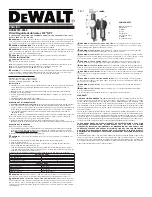
4.4 Chemistry You Need to Know
1.
Chlorine Stabilizer
(cyanuric acid) is needed to maintain proper levels of chlorine. Most unstable
chlorine is destroyed by the UV radiation from the sun within 2 hours. Chlorine stabilizer should be
maintained between 50 - 75 PPM. With high water temperatures above 30°C, stabilizer (cyanuric acid)
must be kept at levels from 75 - 85 PPM.
2.
Nitrates
can cause extremely high chlorine demands and will deplete chlorine from your swimming
pool. In some cases nitrates may even lower your chlorine levels to zero. Your local pool professional
can test for nitrates. Make sure nitrates are not present in your pool.
3.
Metals
(some metals) can cause loss of chlorine. Also, metals can stain your pool. Have your local
pool professional check for metals and recommend methods of removal.
4.
Chloramines
should not be present in pool water. When organic materials combine with free chlorine,
chloramines are formed. This ties up the free chlorine in your pool and does not allow the chlorine
in your pool to disinfect. Chloramines also cloud pool water and burn the eyes. [Shock to remove
chloramines at the initial startup of the pool].
5.
Super Chlorination
burns out the organic material that has combined with chlorine. This frees the
chlorine for sanitizing. This is accomplished by raising the chlorine level quickly and dramatically.
Super chlorination occurs when the sanitation system is placed in Boost mode.
6.
Shocking
(Superoxidation) is also a means of burning out the organic material that has combined with
chlorine. This method involves the manual addition of chemicals to quickly raise the level of chlorine.
When the chlorine level is quickly raised to 5 - 15 PPM the pool water is said to have been shocked.
NOTE
On initial startup of a pool, it is best to shock from an outside source, i.e., use a shock treatment available at
your local pool supplier.
CAUTION
Never use dry acid to adjust pH in arid geographic areas with excessive evaporation and minimal
dilution of pool water with fresh water. A buildup of by-products can damage the electrolytic cell.
7. The pH condition resulting from the operation of the salt water chlorination system is close to neutral.
However, other factors usually cause the pH of the pool water to rise. Therefore, the pH in a pool
chlorinated by a salt water system tends to stabilize at approximately 7.6. If the pool pH rises above
7.6 have a pool professional test to see if other factors such as high calcium hardness or total alkalinity
are the cause and then balance accordingly.
8.
Total Dissolved Solids (TDS)
adding salt to pool water will raise the TDS level. While this does not
adversely affect the pool water chemistry or clarity, the pool water professional testing for TDS must
be made aware salt has been added for the sanitizing system. The individual performing the TDS test
will then subtract the salinity level to arrive at the correct TDS level.
9. New pool water in a recently filled or newly refinished pool may contain undesirable matter. This
undesirable matter could interfere with the salt water chlorinator’s ability to sanitize properly. Make
sure the water is tested by a pool professional and properly balanced before turning on the chlorinator
system.
10.
Sequestering Agents
in some areas the total hardness of your source water may be unusually high.
High total hardness can contribute to scale formation in the pool. Sequestering agents will help keep
minerals in solution and under some conditions can prevent this from happening. Consult your pool
professional about the use of a sequestering agent.
Page 27
ENGLISH
Page 27
ENGLISH
Jandy
®
AquaPure
®
/PureLink™ Power Center and Cell Kit
|
Installation and Operation Manual
















































